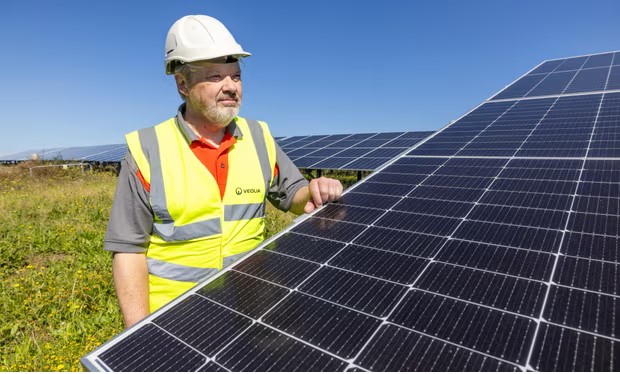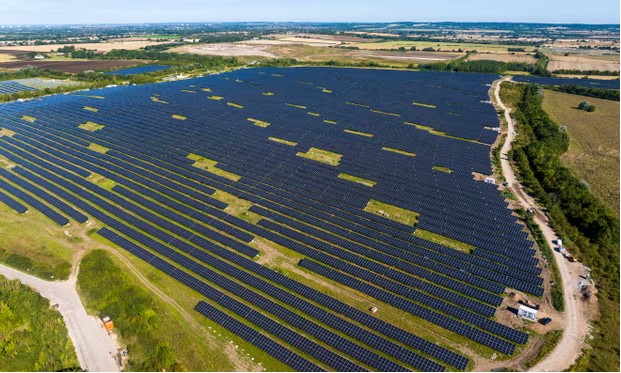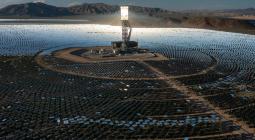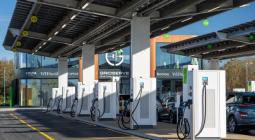Former rubbish dump in Essex becomes UK’s third largest solar farm
Ockendon solar farm to generate enough clean electricity to power the equivalent of 15,000 homes
The largest solar farm in Europe to be built on a closed landfill site has begun generating renewable electricity from a former rubbish dump in Essex.
The Ockendon solar farm, the third largest in the UK, includes more than 100,000 solar modules covering 70 hectares (173 acres) of land.
Its owner, the waste company Veolia, expects the solar array to generate enough clean electricity to power the equivalent of 15,000 homes.
The company said it hoped to give “new life” to the former rubbish dump, which would otherwise have had limited options for redevelopment.

Donald Macphail, the chief operating officer of Veolia’s treatment division, said the project would have “minimal ground-level impact”, meaning that “the wildlife that has repopulated the restored land can continue to coexist with the technology”.
There could be hundreds of hectares of closed landfill sites across the UK that could play host to solar arrays, according to Philippe Queruau, the electrification services manager at Veolia UK. In addition, thousands of hectares of active landfill sites could be used for solar arrays in the future.
“We’re just scratching the surface for now,” he said. “But we need a lot more solar, and landfills are a prime location.”
The government aims to increase the UK’s existing 14 gigawatts (GW) of solar power capacity fivefold to 70GW by 2035. This would require a project on the scale of Ockendon being installed roughly every five days for the next 12 years.
Frank Gordon, the director of policy at the Association for Renewable Energy and Clean Technology, previously known as the Renewable Energy Association, said: “We urgently need more solar in the UK to help meet our legally binding net zero goals, and this summer’s extraordinary global weather has further underlined the need for climate action.”
Veolia is one of many companies installing solar power in urban rooftops such as hospitals and car parks. The company is also exploring the potential for floating solar installations atop water reservoirs as well as solar modules fixed to the top of diesel refuse trucks to help power the bin lifts or air conditioning.

The greatest barrier to the UK’s solar ambitions is the high demand for a connection to the National Grid, which has led to a backlog of applications and a queue with a wait-time of between 10 and 15 years.
National Grid’s electricity system operator and the industry regulator have taken steps to address the problem in recent months in an attempt to halve the wait for renewable energy developers to connect to the grid.
Queruau said the Ockendon solar farm did not face a lengthy delay for a grid connection – and will share parts of the grid infrastructure with another major solar farm nearby.





